Thingiverse
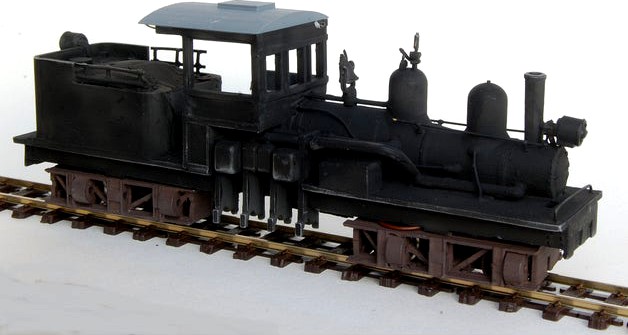
0-16.5 scale narrow gauge (2'6") american Shay locomotiv by caderifor
by Thingiverse
Last crawled date: 3 years ago
DO NOT BUILD THIS THING ! READ THIS FIRST
Having nearly completed the locomotive, apart from the representation of the drive train,
I have just discovered that I got my drawings confused and used one that is only 82% of the desired size.
I do not plan to start again and I may just replace the cab so that I don't have to saw off the driver's legs.
I have redone the design with the cab rescaled.
This design is an attempt to produce a 7mm / foot Shay articulated locomotive using the chassis / mechanism of a Hornby BO BO diesel (BR class 29). The Hornby mechanism, being entirely on one bogie, is positioned in the bunker. The model is based on a drawing of Santa Barbara pole and rails logging loco, found on the internet. But I have opted for a 2 cylinder engine with eccentric valve gear in the centre section. (2 eccentrics sandwiching the final drive gear from the motor/gearbox)
The top of the box hiding the engine, in the cab, has been removed to save having to remove a large block of support. So it will need replacing with plastic card or similar.
The lamps I have included are designed to accept white LEDs. and there is a hole for thin wires through the smokebox.
The biggest snag for authenticity is the wheelbase of the bogies. The Hornby frames (powered and unpowered bogies) are replaced with printed truck frames, incorporating the driveshaft fittings. I have reversed the motor bogie to lessen its intrusion into the cab, and so I have reversed the axles in the front truck for pick up purposes.
The big modelling challenge is the working (at least apparently working) engine and driveshafts. The plan is to assemble a crankshaft of printed crank webs joined by brass tube sections forming big end and small end, with the crankshaft running in brass tube bearings in the engine frame. Although I have started trying to fabricate the crankshaft in brass..
The bevel gears on the driveshaft are conveniently hidden and not modelled, but the mating gears on the wheels are visible so are represented by printed gears stuck to the appropriate wheels.
This leaves the universal joints and extendable jackshaft, that I will post once they are more than an idea. These are unlikely to be printed items.
I have purchased a small 200RPM motor/gearbox and a bag of assorted gears to drive the engine and drive train and I hope the difference in start voltage between this and the traction motor is not too obvious.
Having nearly completed the locomotive, apart from the representation of the drive train,
I have just discovered that I got my drawings confused and used one that is only 82% of the desired size.
I do not plan to start again and I may just replace the cab so that I don't have to saw off the driver's legs.
I have redone the design with the cab rescaled.
This design is an attempt to produce a 7mm / foot Shay articulated locomotive using the chassis / mechanism of a Hornby BO BO diesel (BR class 29). The Hornby mechanism, being entirely on one bogie, is positioned in the bunker. The model is based on a drawing of Santa Barbara pole and rails logging loco, found on the internet. But I have opted for a 2 cylinder engine with eccentric valve gear in the centre section. (2 eccentrics sandwiching the final drive gear from the motor/gearbox)
The top of the box hiding the engine, in the cab, has been removed to save having to remove a large block of support. So it will need replacing with plastic card or similar.
The lamps I have included are designed to accept white LEDs. and there is a hole for thin wires through the smokebox.
The biggest snag for authenticity is the wheelbase of the bogies. The Hornby frames (powered and unpowered bogies) are replaced with printed truck frames, incorporating the driveshaft fittings. I have reversed the motor bogie to lessen its intrusion into the cab, and so I have reversed the axles in the front truck for pick up purposes.
The big modelling challenge is the working (at least apparently working) engine and driveshafts. The plan is to assemble a crankshaft of printed crank webs joined by brass tube sections forming big end and small end, with the crankshaft running in brass tube bearings in the engine frame. Although I have started trying to fabricate the crankshaft in brass..
The bevel gears on the driveshaft are conveniently hidden and not modelled, but the mating gears on the wheels are visible so are represented by printed gears stuck to the appropriate wheels.
This leaves the universal joints and extendable jackshaft, that I will post once they are more than an idea. These are unlikely to be printed items.
I have purchased a small 200RPM motor/gearbox and a bag of assorted gears to drive the engine and drive train and I hope the difference in start voltage between this and the traction motor is not too obvious.
Similar models
cg_trader
$100

Out board engine gearbox
...onverts vertical spinning motion into horizontal spinning motion. the propeller powered by horizontally spinning gears powers the
3dwarehouse
free

Climax locomotive
...gear boxes in each driving truck. unlike the somewhat similar heisler design, there were no side rods on the...
thingiverse
free

Single motor Dual drive gearbox
...aced a short compression spring in this cap to add light drag to the idler gear, this helps provide the swing action to the gear.
thingiverse
free
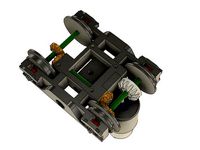
Motorized bogie for OS-Railway - fully 3D-printable railway system by Depronized
...elated designs: https://www.thingiverse.com/groups/os-railway/things
these new files will also be uploaded to the hectorrail 141.
cg_trader
$10

Outboard Engine GearBox Gear Case | 3D
...ft gearcase crankcase gearbox outboard engine outboard motor hobby diy hobby diy automotive drive shaft motor boat outboard motor
grabcad
free

Steam Engine D10 with Reversing Gear
...reversing gear
grabcad
this is a modified d10 with weighted crankshaft and 1/16" longer throw. i have posted the crankshaft
cg_trader
$5

OO Hornby MK1 Coach Bogie NEM Socket to fit older Hornby Coaches | 3D
... hornby coaches | 3d
cg trader
designed for older hornby coaches to replace existing bogie with a version that has a nem socket.
grabcad
free

Modular FRC robot drive base
...ghbox gearbox. it weighs one pound more than the standard kit chassis. omni wheels on the front and back allow it to turn easily.
3dwarehouse
free
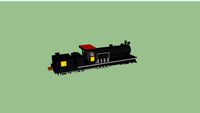
Shay Locomotive
...disadvantages include the noise of gearing, and the rather low top speed. #locomotive #shay #stam_locomotive #steam_engine #train
grabcad
free

Eccentric Gear Drive
...tric gear drive
grabcad
eccentric gear drive for rotational motion with maxon ec frameless ec 45 bldc motor and gear ratio 20:1
Locomotiv
thingiverse
free

Locomotiv logo by PolSpa
...ther two positions.
i have created a smaller version to fit the right-front corner and the back-center.
a m3-.50 nut is required.
thingiverse
free

Litle Lok(i) by sturio
...litle lok(i) by sturio thingiverse the locomotiv on photos is printet in 50% of sice so...
cg_trader
$10

Toy locomotiv
...comotiv toy, made with blender and rendered with cycles, it's high poly, with fine topology, including nice looking materials
cg_trader
$6

LOCOMOTIVS
...ivs
cg trader
a set of wooden toys!!! wood wooden toys kids helicopter buldozer keys horses excavator plane sports toy kids toys
cg_trader
$15

Photo Reference Pack Old Train And Locomotiv
...pack old train and locomotiv
cg trader
you can get full bungle with all texture packs here: https://www.artstation.com/a/5467992
cg_trader
$2

The pantograph of electric locomotive
...graph of electric locomotive
cg trader
the pantograph of electric locomotive train pantograph electro railroad locomotiv vehicle
cg_trader
$100

locomotion 0-5-0
...locomotion 0-5-0 cg trader 3d model locomotion 0-5-0 locomotiv llocomotiv train trains, formats obj, fbx, ready for 3d animation...
3dwarehouse
free

Lokomotiv Stadium, Plovdiv
...competitions. #a_grupa #arena #bulgaria #champions_league #europe #europe_league #field #fifa #locomotiv #loko #loko_plovdiv #lokomotiv #pitch #plovdiv #stadium...
Caderifor
thingiverse
free

Arduino Uno slot by caderifor
...uno fitted with a shield to slot in.
designed to fix down in vertical position but flange could be cut off or attached elsewhere.
thingiverse
free

Wonder Woman Headpiece by caderifor
...were then copied down so that none were floating.
the design is oriented diagonally to get the max size on a normal home printer.
thingiverse
free

Rabbit animation by servo by caderifor
...
i will publish final software on github, as caderifor.
more info if requested.
the rabbits themselves are thingiverse downloads.
thingiverse
free

0 gauge / 7mm scale concrete posts by caderifor
...led section on top. (taper in one plane only)
they have a short mounting spiggot.
the wire holes did not print very well for me.
thingiverse
free

Open coach, 7mm scale - 0-16.5 narrow gauge by caderifor
...gn by bluetobits
underframe split to ease fitting pinpoint axles in bearing cups.
thin styrene sheet skin to widen roof slightly.
thingiverse
free

Rolling Bascule bridge by caderifor
...g. (it also includes servo driven crossing gates that protect the bridge opening area, flashing warning lights and neenaw siren)
thingiverse
free

Station lamp (freelance) 7mm scale - modern image height to choice. by caderifor
...notch in the brass tube through which it passes with hot melt glue or epoxy. the head is then glued to the top of the brass tube.
thingiverse
free

Eriba Puck caravan model 1:43 scale by caderifor
...esive.
manoeuvring handles front and back are piano wire.
the caravan is sitting on wheels from a corgi minibus that i carved up.
thingiverse
free

Circus train - for Maileg mice - for Duplo track by caderifor
...sired ease of coupling, with a needle file.
the locomotive is a normal duplo loco, glued together and painted to match the train.
thingiverse
free

Double Fairlie locomotive in 7mm scale / 0-16.5 by caderifor
...sional accuracy is not claimed for this design.
photos of assembled loco promised asap. chassis modifications pix added 30/12/20
Shay
3d_ocean
$30

Ashley Shay Poster Bedroom Set
...ude 3d models: 1. shay chest. dimensions 32”w x 16”d x 50”h. 2. shay nightstand. dimensions 24”w x 16”d x 28”h. 3. shay dresse...
3d_export
$19
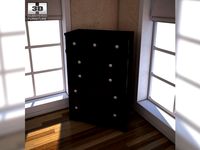
Ashley Shay Chest 3D Model
...m set chest bed interior modern contemporary photorealistic detailed textured
ashley shay chest 3d model humster3d 61466 3dexport
3d_ocean
$10

Ashley Shay Chest - 3D model.
...x 16”d x 50”h. material: wood products and other. color: almost black. this model is made in accordance with the proportions a...
3d_export
$19

Ashley Shay Nightstand 3D Model
...tstand bed interior modern contemporary photorealistic detailed textured
ashley shay nightstand 3d model humster3d 61416 3dexport
3d_export
$19

Ashley Shay Dresser Mirror 3D Model
...sser mirror ashley shay chest furniture bedroom set interior modern
ashley shay dresser mirror 3d model humster3d 61022 3dexport
3d_ocean
$4
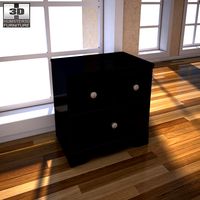
Ashley Shay Nightstand - 3D model.
...24”w x 16”d x 28”h. material: wood products and other. color: almost black. this model is made in accordance with the proporti...
3d_export
$19

Ashley Shay Table Lamp 3D Model
... lightening ashley shay bedroom set bulb bedroom interior set collection
ashley shay table lamp 3d model humster3d 62518 3dexport
humster3d
$15

3D model of Ashley Shay Chest
...a detailed 3d model of ashley shay chest in various file formats. all our 3d models were created maximally close to the original.
humster3d
$15

3D model of Ashley Shay Nightstand
...ailed 3d model of ashley shay nightstand in various file formats. all our 3d models were created maximally close to the original.
3d_ocean
$16

Ashley Shay Queen Poster Bed with Storage
...models. material: wood products and other. color: almost black. dimensions: 81”w x 18”d x 11”h. this model is made in accordan...
Narrow
3d_export
$5

narrow slot handle
...narrow slot handle
3dexport
narrow slot handle
turbosquid
$6

NARROW ROAD
...osquid
royalty free 3d model narrow road for download as max on turbosquid: 3d models for games, architecture, videos. (1210764)
turbosquid
$79

The Narrow House
... available on turbo squid, the world's leading provider of digital 3d models for visualization, films, television, and games.
turbosquid
$3

Narrow Bridgeroadsign
...ow bridgeroadsign for download as 3ds, dae, fbx, obj, and stl on turbosquid: 3d models for games, architecture, videos. (1532958)
turbosquid
$19

Beige narrow curtains
...yalty free 3d model beige narrow curtains for download as max on turbosquid: 3d models for games, architecture, videos. (1448198)
turbosquid
$33

Road Narrows Sign
... 3d model road narrows sign for download as 3ds, max, and obj on turbosquid: 3d models for games, architecture, videos. (1303392)
turbosquid
$6

Narrow wooden shelf
... available on turbo squid, the world's leading provider of digital 3d models for visualization, films, television, and games.
turbosquid
$6

Narrow wooden shelf
... available on turbo squid, the world's leading provider of digital 3d models for visualization, films, television, and games.
turbosquid
$6

Narrow wooden shelf
... available on turbo squid, the world's leading provider of digital 3d models for visualization, films, television, and games.
turbosquid
$5

Narrow wooden shelf
... available on turbo squid, the world's leading provider of digital 3d models for visualization, films, television, and games.
Gauge
3d_ocean
$10
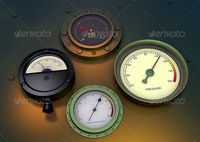
Gauges
...rim to them. each gauge has an xpresso tag to give them an automatic animation without the need for keyframing and can be chan...
3d_export
$5

pressure gauge
...pressure gauge
3dexport
pressure gauge
3d_export
$5
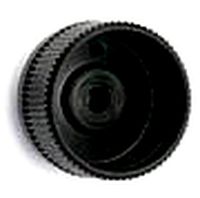
gauge protector
...gauge protector
3dexport
gauge protector
3d_export
$5

Gauge 3D Model
...gauge 3d model
3dexport
gauge pressure gas air liquid
gauge 3d model fau 71180 3dexport
3d_export
$5

protected pressure gauge
...protected pressure gauge
3dexport
protected pressure gauge
3d_export
$5

hard gauge protector
...hard gauge protector
3dexport
hard gauge protector
turbosquid
$29

Screw Gauge
... available on turbo squid, the world's leading provider of digital 3d models for visualization, films, television, and games.
turbosquid
$29
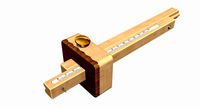
Marking Gauge
... available on turbo squid, the world's leading provider of digital 3d models for visualization, films, television, and games.
turbosquid
$20

Blade Gauge
... available on turbo squid, the world's leading provider of digital 3d models for visualization, films, television, and games.
3d_export
$5
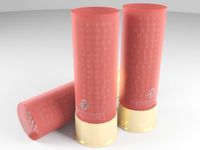
12 Gauge 3D Model
...12 gauge 3d model
3dexport
shotgun shell gauge 12
12 gauge 3d model pirog 54511 3dexport
American
3d_export
$12

american kitchen
...american kitchen
3dexport
american kitchen
3d_export
$12

american bedroom
...american bedroom
3dexport
american bedroom
3d_export
$12

american office
...american office
3dexport
american office
3d_export
$12

american bedroom
...american bedroom
3dexport
american bedroom
3d_export
$10
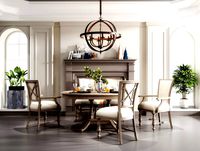
american restaurant
...american restaurant
3dexport
american restaurant
3d_export
$10

american kitchen
...american kitchen
3dexport
american kitchen
3d_export
$7

american study
...american study
3dexport
american study
3d_export
$7

american restaurant
...american restaurant
3dexport
american restaurant
3d_export
$7

american bedroom
...american bedroom
3dexport
american bedroom
3d_export
$10

american bedroom
...american bedroom
3dexport
american bedroom vr4.1
0
turbosquid
$12

Calligraphic Digit 0 Number 0
...hic digit 0 number 0 for download as max, obj, fbx, and blend on turbosquid: 3d models for games, architecture, videos. (1389318)
3d_export
$6
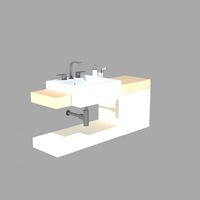
set-0
...set-0
3dexport
turbosquid
$6

hedge 0
...yalty free 3d model hedge 0 for download as max, obj, and fbx on turbosquid: 3d models for games, architecture, videos. (1450353)
turbosquid
$5

Nuber 0
...oyalty free 3d model nuber 0 for download as ma, obj, and fbx on turbosquid: 3d models for games, architecture, videos. (1564674)
turbosquid
$22
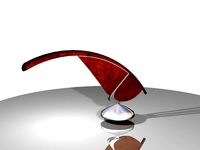
0.jpg
... available on turbo squid, the world's leading provider of digital 3d models for visualization, films, television, and games.
turbosquid
free

Steam Locomotive Fowler 4F 0-6-0
... available on turbo squid, the world's leading provider of digital 3d models for visualization, films, television, and games.
turbosquid
$10

Liquid Number 0
... model liquid number 0 for download as c4d, 3ds, fbx, and obj on turbosquid: 3d models for games, architecture, videos. (1689919)
turbosquid
$45
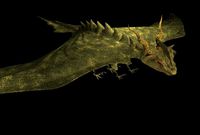
Dragon360_perspShape_tmp.0.jpg
... available on turbo squid, the world's leading provider of digital 3d models for visualization, films, television, and games.
turbosquid
$8
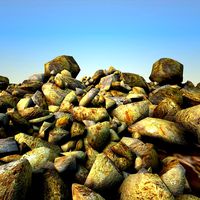
Rocks Debris 0
... available on turbo squid, the world's leading provider of digital 3d models for visualization, films, television, and games.
3d_export
$18
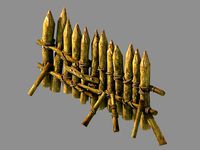
wood-guardrail-fence 0
...wood-guardrail-fence 0
3dexport
wood-guardrail-fence 0<br>3ds max 2015
16
3ddd
$1
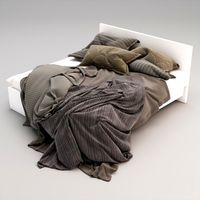
Bed 16
...bed 16
3ddd
постельное белье
bed 16.hope you like it.thanks you very much
design_connected
$4
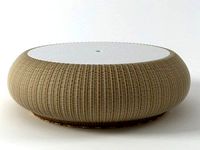
Bolla 16
...bolla 16
designconnected
gervasoni bolla 16 coffee tables computer generated 3d model. designed by michael sodeau.
3d_export
$6

tap-16
...tap-16
3dexport
3d_export
$6

set-16
...set-16
3dexport
3ddd
$1
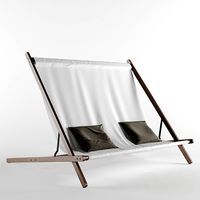
16 Mobilier ALIXE
... уличная , мебель
производитель: 16 mobilier
модель: alixe
3ddd
$1

Curtains 16
...curtains 16
3ddd
ламбрикен
curtains 16
polys: 350077
other models:http://3ddd.ru/users/brast/models
turbosquid
$199

F-16
...16
turbosquid
royalty free 3d model f-16 for download as max on turbosquid: 3d models for games, architecture, videos. (1188169)
turbosquid
$128
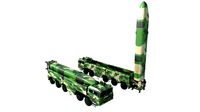
DF-16
...6
turbosquid
royalty free 3d model df-16 for download as max on turbosquid: 3d models for games, architecture, videos. (1660349)
turbosquid
$40

cottage 16
...bosquid
royalty free 3d model cottage 16 for download as max on turbosquid: 3d models for games, architecture, videos. (1377002)
turbosquid
$20

Decor 16
...urbosquid
royalty free 3d model decor 16 for download as stl on turbosquid: 3d models for games, architecture, videos. (1676913)
6
3d_export
$18

tulip 6
...tulip 6
3dexport
tulip 6
3d_export
$5

hinge 6
...hinge 6
3dexport
hinge 6
3ddd
$1
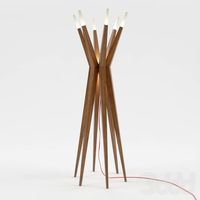
MASIERO / FLASHWOOD STL 6 + 6
...6
3ddd
masiero
торшер flashwood stl 6 + 6 фабрики masiero
http://www.masierogroup.com/c87_697/it/flashwood%20stl%206%20+%206.ashx
turbosquid
$110

Atmos Cannon 2000 6*6
...yalty free 3d model atmos cannon 2000 6*6 for download as skp on turbosquid: 3d models for games, architecture, videos. (1528591)
turbosquid
$1

ae 6 6 electric locomotive
... free 3d model ae 6 6 electric locomotive for download as obj on turbosquid: 3d models for games, architecture, videos. (1707537)
turbosquid
$39
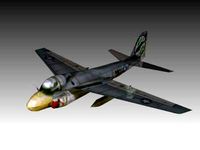
A-6
... available on turbo squid, the world's leading provider of digital 3d models for visualization, films, television, and games.
3ddd
$1

6 ковров
...6 ковров
3ddd
ковры , ковер
6 ковров
turbosquid
$12

Calligraphic Digit 6 Number 6
...hic digit 6 number 6 for download as max, obj, fbx, and blend on turbosquid: 3d models for games, architecture, videos. (1389336)
turbosquid
$19

Case For Phone 6 Girl 6
... available on turbo squid, the world's leading provider of digital 3d models for visualization, films, television, and games.
turbosquid
$35

Iphone 6 & 6 Plus All
... available on turbo squid, the world's leading provider of digital 3d models for visualization, films, television, and games.
Scale
turbosquid
$20
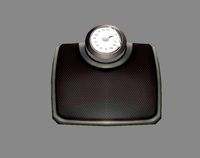
Weight scale or Bathroom Scale
...ght scale or bathroom scale for download as max, fbx, and obj on turbosquid: 3d models for games, architecture, videos. (1664576)
turbosquid
$19

Scale
...e
turbosquid
royalty free 3d model scale for download as fbx on turbosquid: 3d models for games, architecture, videos. (1411722)
turbosquid
$5

Scales
...s
turbosquid
royalty free 3d model scales for download as ma on turbosquid: 3d models for games, architecture, videos. (1393439)
turbosquid
$40

Scale
... available on turbo squid, the world's leading provider of digital 3d models for visualization, films, television, and games.
turbosquid
$17
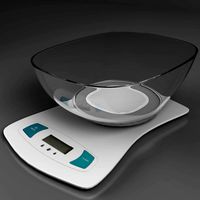
Scales
... available on turbo squid, the world's leading provider of digital 3d models for visualization, films, television, and games.
turbosquid
$12

Scale
... available on turbo squid, the world's leading provider of digital 3d models for visualization, films, television, and games.
turbosquid
free

Scale
... available on turbo squid, the world's leading provider of digital 3d models for visualization, films, television, and games.
3d_export
$7
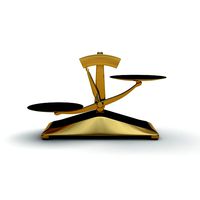
of scales
...s have a flat point of support. the samples are rendered in the standard cinema 4d renderer. enjoy your use and creative success.
3d_export
$5
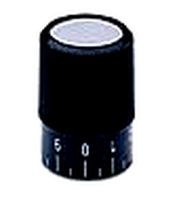
scale knob
...scale knob
3dexport
scale knob
3d_export
$20
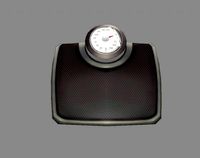
cartoon weight scale or bathroom scale
...cartoon weight scale or bathroom scale
3dexport
texture size:512px number of texture:1 texture format: png
5
turbosquid
$6
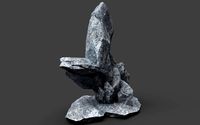
Rock 5-5
...urbosquid
royalty free 3d model rock 5-5 for download as obj on turbosquid: 3d models for games, architecture, videos. (1639063)
3d_export
$5
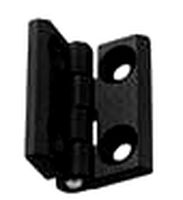
hinge 5
...hinge 5
3dexport
hinge 5
turbosquid
$10
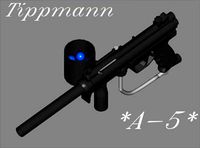
A-5
... available on turbo squid, the world's leading provider of digital 3d models for visualization, films, television, and games.
turbosquid
$2

A-5
... available on turbo squid, the world's leading provider of digital 3d models for visualization, films, television, and games.
turbosquid
$12
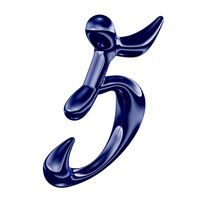
Calligraphic Digit 5 Number 5
...hic digit 5 number 5 for download as max, obj, fbx, and blend on turbosquid: 3d models for games, architecture, videos. (1389333)
3ddd
$1

5 роз
...5 роз
3ddd
5 роз в стеклянной вазе
design_connected
$11

iPhone 5
...iphone 5
designconnected
apple iphone 5 computer generated 3d model.
3ddd
$1
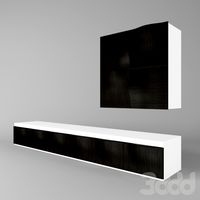
Lola 5
...lola 5
3ddd
miniforms
lola 5 miniforms 300*65*134
3ddd
$1

Nexus 5
...dd
nexus , phone , телефон
google nexus 5 phone
3d_ocean
$15

iPhone 5
...iphone 5
3docean
3d 4d apple cinema iphone model modeling phone screen texture
iphone 5 3d model and texture realistic iphone 5.
2
design_connected
$11
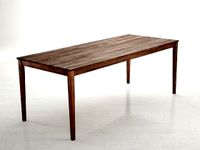
No 2
...no 2
designconnected
sibast no 2 computer generated 3d model. designed by sibast, helge.
turbosquid
$6
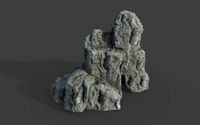
Cliff Rock 2-2
...uid
royalty free 3d model cliff rock 2-2 for download as obj on turbosquid: 3d models for games, architecture, videos. (1619161)
turbosquid
$29

Book variation 2 2
...3d model book variation 2 2 for download as max, obj, and fbx on turbosquid: 3d models for games, architecture, videos. (1366868)
turbosquid
$22

Classic baluster (2) (2)
...assic baluster (2) (2) for download as max, obj, fbx, and stl on turbosquid: 3d models for games, architecture, videos. (1483789)
turbosquid
$99
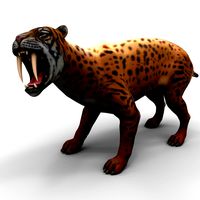
Smilodon 2 Pose 2
... available on turbo squid, the world's leading provider of digital 3d models for visualization, films, television, and games.
turbosquid
$20
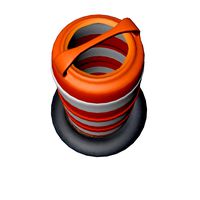
Barrel Barricade 2-2
... available on turbo squid, the world's leading provider of digital 3d models for visualization, films, television, and games.
turbosquid
$6

Wall Trophy (2) (2)
... available on turbo squid, the world's leading provider of digital 3d models for visualization, films, television, and games.
turbosquid
free
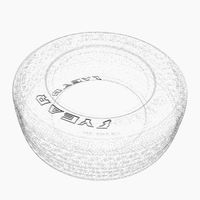
Tire label 2 of 2
... available on turbo squid, the world's leading provider of digital 3d models for visualization, films, television, and games.
3ddd
$1
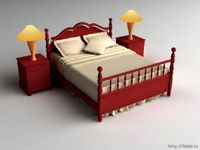
Кровать, 2 тумбочки, 2 светильника
...кровать, 2 тумбочки, 2 светильника
3ddd
кровать, 2 тумбочки, 2 светильника
нормальное качество
формат 3ds max
без текстур
3ddd
free
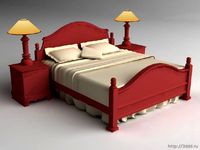
Кровать, 2 тумбочки, 2 светильника
...кровать, 2 тумбочки, 2 светильника
3ddd
кровать, 2 тумбочки, 2 светильника
нормальное качество
формат 3ds max
без текстур
